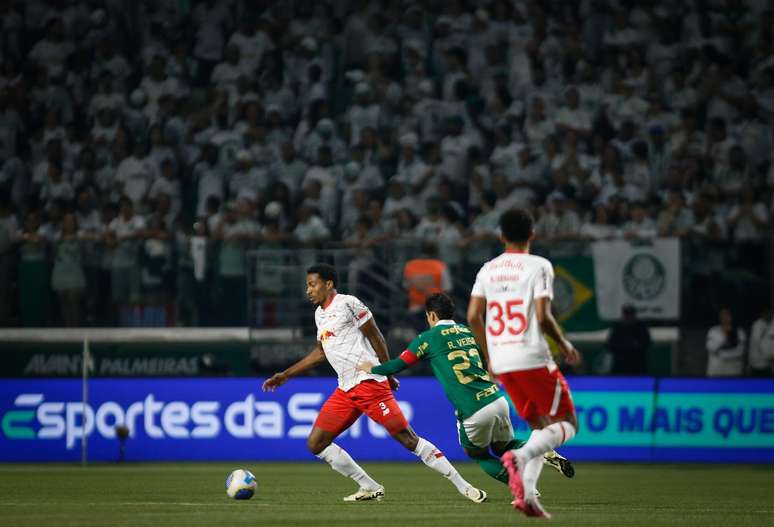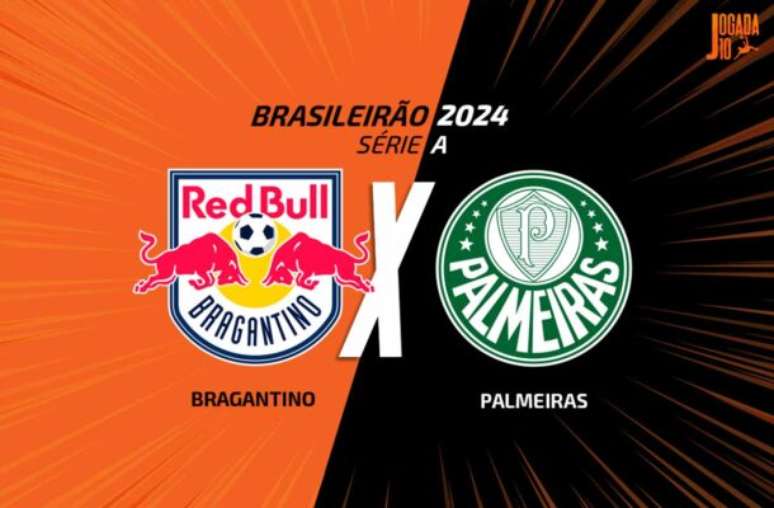Erik Ainge’s best moments for the New York Jets in 2009 had nothing to do with the passes they threw. That’s life as a third-string quarterback — especially then, on a Jets team that often carried four players at the position.
During the 2009 season, Erik Ainge would spend most of his days studying film, taking notes, working with the scout team. One of Ainge’s most important jobs was to help starting tight end Dustin Keller with his routes, and to study opposing defenses. He was competing with O’Connell to be the third stringer — but really, they were just competing for fist bumps. That was currency.
Ahead of a Patriots game that season, Ainge noticed something on film about New England’s secondary and how they’d adjust their safeties based on a certain look the offense was showing. Ainge suggested getting to play-action when the Patriots showed that look. The Jets used it in the game, and it worked: Mark Sanchez completed a long pass down the field. Ainge got his fist bump.
That was the closest Ainge could get to throwing a touchdown pass in a meaningful game, with Sanchez locked in as the starter and Kellen Clemens second on the depth chart. Those moments popped up every once in a while for Ainge. They happened much more frequently for the other quarterback joining him at the bottom of the depth chart: Kevin O’Connell.
“I took pride in it,” Ainge said. “Kevin took so much pride in that.”
When O’Connell was a Jets quarterback — during the 2009 and ‘10 seasons, and then again in 2011 — his teammates and coaches often referred to him as “Coach O’Connell,” though back then he didn’t love the nickname. His playing career wasn’t over yet, after all, and he wanted to be taken seriously as a player. He was laser-focused on doing his job to the best of his ability, namely running the scout team and working in service to others, namely Sanchez.
“Having to start out with that of, ‘If you guys have any questions, I’m here because I think Mark’s doing O.K. at the quarterback position. I don’t think they’re going to be calling my number any time soon, so I want to try to help the team win,’” O’Connell said this week. “It kinda morphed and grew from there to more than just about that one particular opponent. I just started to see, Hey, you turn on some tape, pair that with the information you know already, and maybe you can help one play. Maybe you can help one player on that one play have success. And maybe that led into falling in love with that aspect of it. Now, it’s just on a little bit bigger scale.”
O’Connell saw the field in a handful of preseason games for the Jets. (Mary Ann Chastain / Getty Images)
O’Connell is now in his third year as the head coach of the Minnesota Vikings, 4-0 this season as O’Connell earns raves for his work with quarterback Sam Darnold, another former Jet. He’s the early favorite to win Coach of the Year as the Vikings prepare for their Week 5 game against his old team, the Jets, in London.
Last year, the Vikings lost Kirk Cousins when he tore his Achilles in Week 8. The Vikings traded for Josh Dobbs two days later — and then five days later, O’Connell threw him into the lineup mid-game. Minnesota won back-to-back games with Dobbs at quarterback. This season, O’Connell has Darnold playing at a level the Jets envisioned when they drafted Darnold third overall in 2018. The Jets traded Darnold away in 2021 to make room for Zach Wilson. He bounced around the league, and then O’Connell unlocked his potential.
O’Connell has built up a reputation as a top-level play-caller, but even more than that, he’s earned praise for his ability to put quarterbacks — seemingly any quarterback — in position to succeed.
Just like he used to for Sanchez as a third- or fourth-stringer for the Jets, O’Connell’s tenure in Minnesota has been one full of fist bumps.
“When you have a young quarterback in the formative years of their career in New York like Mark, you want people like Kevin O’Connell,” said former Jets general manager Mike Tannenbaum, who traded for O’Connell in 2009. “He is smart, level-headed, he’s going to come in on a Monday and you don’t know if we won or lost. You need that especially in a market like New York.”
It’s working in Minnesota too.
Tannenbaum had his eye on O’Connell in the 2008 NFL Draft. O’Connell had all the tools: size (6-foot-5), athleticism (4.61 40-yard dash), arm talent and smarts. The Jets didn’t own their third-round pick after a trade earlier in the offseason but had picks in the fourth and fifth rounds. O’Connell was taken before they could get him, scooped up by the Patriots at the end of the third, 94th overall, with a goal to develop him as Tom Brady’s long-term backup.
The Jets turned to Ainge, out of Tennessee, in the fifth round, a developmental arm to bring into camp to compete with Clemens to be Sanchez’s backup. O’Connell only lasted a year with the Patriots, landed with the Lions during the 2009 offseason, and the Jets acquired him after training camp that year for a seventh-round pick.
Tannenbaum loved his competitive fire — and the desire to make his teammates better.
“He was tough, he was smart,” Tannenbaum said. “Between my time (as GM) with the Jets and Dolphins I worked with coaches and one of my favorite clients was (NBA coach) Steve Kerr. He was not a ‘what you see is what you get’ guy. Steve comes across as very affable but he’s a world-class competitor. Kevin has those exact same traits. He’s a good person, he’s nice, but from a competitive standpoint he wants to rip your throat out. That’s a rare combination.”
O’Connell never played a down in the regular season for the Jets but still made an impact. Initially, he was acquired with an eye toward adding insight ahead of a Week 2 game against the Patriots.

O’Connell’s time behind Brady was short lived, but the Jets believed O’Connell played a role in upending Brady’s Patriots later on. (Jim Rogash / Getty Images)
Defensive coordinator Mike Pettine called O’Connell into his office that week and asked for intel. That’s common practice — picking the brain of a player who played for an upcoming opponent — but doesn’t always bear fruit. But that day, O’Connell critiqued the Jets’ defensive game-plan, looked at the scouting reports and even drew up a blitz for Pettine to use in the game — it was successful in the game, leading to a sack of Brady. Pettine renamed the playcall “K.O.” after O’Connell. The Jets won that game, holding Brady without a touchdown pass.
This helped teach O’Connell the power of speaking up. “I look back at a lot of those times where I didn’t really know: ‘Should I say something? Should I not? Hey, what do you guys got going on?’” O’Connell said.
Those Pettine-O’Connell meetings became a weekly occurrence, which helped O’Connell to find his coaching voice. It’s no coincidence that Pettine gave O’Connell his first coaching job in 2015, three years after his playing career ended, as the Cleveland Browns quarterbacks coach. Pettine is currently on O’Connell’s Vikings staff, as assistant head coach and outside linebackers coach.
“Building that relationship with ‘Pett’ was one of the most impactful things that took place along my football journey because there was a coach, a really successful defensive coordinator in this league, who was willing to have just a no-name quarterback come in and talk a little football,” O’Connell said. “I learned a lot from him. I learned a lot from all the coaches who were in New York.”
Back then, Tannenbaum said, head coach Rex Ryan would rave about O’Connell’s mind, calling him the Jets’ best defensive coach. It’s why O’Connell stuck around even after that Patriots game — and why they wanted him back in 2011 after cutting him in 2010.
“Rex and the defensive coaches, they would pick his brain because he was so smart,” Tannenbaum said. “I remember talking to Kevin when he was a player and it was so clear he had the ability to be a head coach. To see all his success now is no surprise at all.”
Tannenbaum, and Ryan, also inadvertently contributed to the moment that set him on a path toward becoming a head coach: They cut him. Twice.

GO DEEPER
‘Make the complex simple’ and adapt on the fly: How Kevin O’Connell leads electric Vikings
Matt Mulligan, a Jet from 2009-11 and Patriot in 2013, remembers how stressful it would be getting into a huddle with Brady, how he’d look around at his teammates and simply say: You know what you’re doing, right?
That’s not how O’Connell operated. He’d figure out if a teammate was struggling with a play-call, and he’d quickly get them on the right track. “He’d do it in those split seconds,” said Mulligan, a Jets tight end. “You think about it now and say, ‘Look how great of a head coach he is, can you imagine having him as a teammate?’ For him to be on that sideline and for us basically having another coach that’s a player — at the time you might not have known it but the way he looked at the game was nothing but beneficial for Mark Sanchez and anyone he worked with.”
Mulligan had the benefit, as a backup tight end, of getting a lot of reps with O’Connell when both were members of the scout team. But others, like wide receiver Brad Smith and offensive lineman Damien Woody, didn’t get to spend as much time with O’Connell, even if they fully understood that they were bearing the fruit of his labor on offense, the work he was doing behind the scenes.
“He was always helping receivers out, helping the other quarterbacks out when they were playing, understanding, learning,” Smith said. “You could tell he was studious, he put his head down, asked a lot of questions. Just looking back on it and seeing where he’s at now, the dude was just always coaching. Those are the people that make teams great. You need really good players and you need lots of talent, but you combine the talent with the selflessness and the willingness to put the team first and that’s what makes teams really, really good. He really helped us to set the tone.”
Added Woody: “Kevin was quiet. But I think the one thing about Kevin is you could see this dude could be a coach. Smart guy, absorbed things quickly, those are the type of guys that typically transition into coaching. He wasn’t the most talented guy but he came through the ranks the right way.”
In college, O’Connell used to keep a journal that logged everything he saw in a given week — coverages, game situations, how he performed in those specific situations. He brought that method with him to the NFL. On the sideline, O’Connell always had a clipboard and he’d chart coverages. During the week, he’d work on cut-ups for offensive coordinator Brian Schottenheimer and he was at the Jets facility every day, along with Ainge and the other Jets quarterbacks, throughout his tenure. He was responsible for analyzing third down, red-zone and two-minute drill situations, invaluable practice for when he eventually became a coach.
Ainge recalled some mornings when wires would get crossed and he and O’Connell accidentally worked on the same cut-up. “So we’d buckle down like kids scrambling for a test. Yes, Rex Ryan was called a players coach, ‘one of the guys.’ Yeah, O.K., that’s if you do what you’re supposed to. If you don’t — he was very much not a players coach,” Ainge said, laughing. “It only happened a couple times.”
After some long days, Jets receivers would come into the quarterback room asking for someone to throw them some passes back on the practice field. O’Connell always said yes.
“It’s a little different when you’re not competing to be the guy who’s playing on Sunday. We had it a little easier,” Ainge said. “Our job was to be good teammates. It was, ‘Yes sir, what do you need next?’ We both kind of lived that. It was more just fun. I don’t think we ever felt like we were competing with each other. We were just guys that were helping.”

GO DEEPER
How Aaron Rodgers earned his hometown’s unconditional love
O’Connell walked into Tannenbaum’s office in 2010 and the GM pointed to a chair and said “sit right here.”
Tannenbaum didn’t even wait for him to sit down before blurting out: “We’re gonna let you go.”
The reasoning: Tannenbaum and Ryan felt like Clemens had outplayed O’Connell for the third quarterback job behind Sanchez and Mark Brunell. The harsh moment was shown on HBO’s “Hard Knocks” for millions to see.
“We really had hope when we traded for you that you’d turn into our long-term No. 2 and unfortunately that hasn’t happened,” Tannenbaum told him. “That was really at the end of the day, the difference was there is more of a trust that Kellen, if he had to go play, he has a better chance of operating our offense than you do.”
O’Connell nodded his head, disappointed. “I wanted to be here,” he said. “This is going to be really tough. Thank you for the opportunity.”
Well, the Jets signed him back in 2011 after some injuries at quarterback … and then cut him again in 2012 to make room for Tim Tebow. O’Connell still has a voicemail from Ryan saved on his phone, where Ryan told him of his release. It was a turning point in O’Connell’s career, the moment he started to seriously consider pursuing coaching.
“(Ryan) had good news and bad news,” O’Connell told Ryen Russillo on his podcast. “The bad news is it probably wasn’t going to work out for me to continue on as a quarterback for the New York Jets. But the good news was he couldn’t wait to tell me about the coaching opportunity he had for me, which coincided with him telling me multiple times, ‘I don’t think much of you as a quarterback.’ But he told me multiple times, ‘Your life’s work is gonna be coaching.’” (Ryan declined an interview request through an ESPN spokesman for this story.)
“Not always what you want to hear when you’re lacing them up and trying to get better every day,” O’Connell continued. “But what it did is (it) gave me confidence that even the three years that I was there, I was probably more of a coach than a player, in all reality, whether it was helping with the defense or helping in the quarterback room with Mark Sanchez.”
Tannenbaum says now that “when a player is not playing, there’s always a vulnerability. It is what it is.” Ultimately, Tannenbaum insisted, the Jets were better when O’Connell was on the roster.
“When you bring 53 jigsaw puzzle pieces together you want the best team you possibly can have,” he said. “Having Kevin on your team gave you that.”

O’Connell was McVay’s offensive coordinator during the Rams’ Super Bowl season three years ago. (Stacy Revere / Getty Images)
A few years later, Pettine hired him. He was with the Browns for a year, worked “special projects” for Kyle Shanahan and the 49ers in 2016, and was hired as Washington’s quarterbacks coach in 2017. He helped Mulligan get hired by Washington as a strength coach, and so Mulligan got to see O’Connell at the infancy of his coaching journey.
Mulligan marveled at how O’Connell was “the same guy every day”. Every morning, he’d go to the strength room, Nitro cold brew drink in hand, and he’d “yap it up with all the strength coaches, then he’d go do his business.” Washington’s quarterbacks at the time were Colt McCoy and Case Keenum — not exactly Kirk Cousins or Aaron Rodgers — but he had them “playing out of their shoes”, Mulligan said. When O’Connell spoke, players listened, even if they weren’t in the quarterback room.
O’Connell quickly rose to offensive coordinator in Washington in 2019 and spent two years in that role working under Sean McVay, coaching Matthew Stafford during the Rams’ Super Bowl season before the Vikings hired him away. He led the Vikings to a 13-4 record and the playoffs in his first year. Now, he has Darnold playing out of his shoes, two former Jets quarterbacks — plus another, quarterbacks coach Josh McCown — working in complete harmony.
O’Connell’s journey to this moment, thriving, started with some fist bumps on the Jets sideline. There will be some more if the Vikings win again on Sunday against New York.
With the Jets, “I just started to see, Hey, you turn on some tape, pair that with the information you know already, and maybe you can help one play. Maybe you can help one player on that one play have success. And maybe that led into falling in love with that aspect of it,” O’Connell said. “Now, it’s just on a little bit bigger scale.”
(Top photo: Al Pereira / Getty Images)





